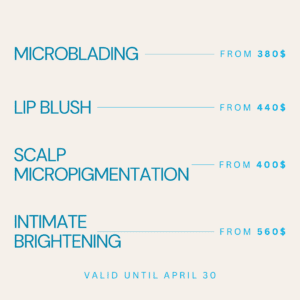
Sunscreen: a user’s guide
Applying sunscreen is one of the best ways to protect your skin from the harmful effects of the sun’s ultraviolet (UV) radiation. But how much do you know about the stuff? And are you putting it on the right way so you get the full benefits of its protection? Before you slather it on, read these 5 sunscreen facts.
1.Sunscreen ingredients can go bad.
Sunscreens definitely have an expiry date. The expiry date may be 2 or 3 years from the day you purchased it, but always check the bottle. How can you tell if the sunscreen ingredients have gone bad? Try spreading some on your skin – does it seem to thin, too thick, or too clumpy? Has it developed a gritty texture? If your sunscreen seems “off” in texture, it may be a good idea to throw out that bottle and purchase a new one.
2.Sunscreen ingredients work in two different ways.
The ingredients in sunscreens literally shield your skin from the sun’s damaging UV radiation. Some elements – known as physical ingredients – reflect the light or cause it to bounce and scatter. Other elements – chemical ingredients – absorb the light into themselves. Either way, your skin is protected. Many formulas make use of both types of ingredients, often called “broad spectrum” sunscreen, and this is the type often recommended for people to use. For those with sensitive skin, there are chemical-free formulations available that contain only physical ingredients like zinc oxide or titanium dioxide.
3.Sunscreen labels may not tell the whole story.
Scanning a sunscreen label, you may see a lot of acronyms – like SPF, UVA, and UVB. Here’s a breakdown for you:
- UVA is the radiation from the sun’s light that penetrates into the skin and causes the changes that make your skin appear darker, or tan. UVA waves are usually to block harder than UVB radiation.
- UVB is the radiation from the sun’s light that is responsible for the surface redness and pain of sunburn. Both UVA and UVB are associated with skin damage, skin cancer, and premature skin aging.
- SPF stands for “sun protection factor.” It only measures how much the sunscreen protects your skin from UVB radiation – the sun’s light that will cause sunburn. The SPF represents how many times longer you can be exposed to the sun before getting burnt. So say that someone with exposed skin with no sunscreen starts to burn after 2 minutes. That same person wearing SPF 15 sunscreen would be able to be exposed to the sun for 30 minutes (15 times 2 minutes) before burning.
Sunscreen labels always list SPF but not always how well a sunscreen will protect the skin from UVA radiation. Others have suggested changing SPF to SPF-UVB so consumers can make the distinction. Still others say that since high-SPF sunscreens would block most UVB and UVA radiation, it might not be necessary to label it separately.
4.Sunscreens can be ineffective.
This is different than when a sunscreen’s ingredients go bad. No, this is when you just don’t use it correctly. Certain situations make sunscreen less protective:
- When you sweat: When you perspire, sunscreen may slough off your skin. In humid weather or while exercising, you may need to apply more sunscreen more often to make up for loss when you sweat.
- When you get wet: No sunscreen is truly waterproof. And even “water-resistant” formulas will need to be reapplied after going swimming or taking a shower.
- When you dry off: Any time you wipe down your skin with a towel, you might rub off all of your sun protection.
- When you don’t reapply: No sunscreen lasts all day. Whether it’s sunny or overcast, you need to apply sunscreen 15 minutes to an hour before you’ll be outdoors and then reapply it every 2 hours.
- When you don’t use enough: Dermatologists recommend “liberal” use of sunscreen. That means about 1 ounce or 2 to 3 tablespoons per application – which is about enough to fill a shot glass. Rub it in evenly across all parts of your body that will be exposed to the sun. Don’t forget forgettable spots, like your hands, your feet, the backs of your ears, the back of your neck, your knees, and bald spots on the head.
- When you don’t use it at all! Sunscreen is not just for sunny days. 80% of the sun’s UV radiation makes it through the clouds, and snow reflects the same amount. UVA rays can even pass through office windows! The American Academy of Dermatology suggests daily use on any parts of your skin that clothing won’t cover (hands, face) on any day you will be outside.
5.Sunscreen comes in many varieties.
You’re ready to hit the pool or head out to the beach, and you figure you’ll stop by the drugstore to grab some sunscreen. Smart – but browsing the sunscreen section can be surprisingly challenging! You have many choices: lotion, gel, spray, creams, sticks, and others. Which do you choose? As long as you choose a sunscreen that is water-resistant with broad-spectrum protection and an SPF of at least 30, the rest is up to personal preference. Consider a cream if you have dry skin, and opt for a stick to apply around sensitive spots like the eyes.
-
Do you have skin problems due to repeated unprotected exposure to the sun ?
Forever Young BBL™ is a non-invasive solution to skin rejuvenation, a ground-breaking treatment that targets the signs of aging and sun damage. ELNA Esthetics offers 2 clinics with skin care specialists dedicated to perfecting your natural beauty :



